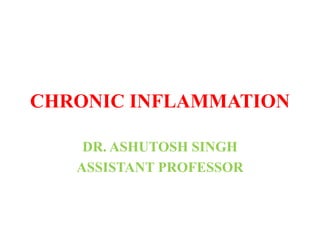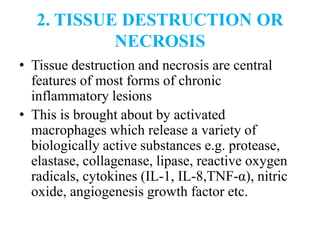Chronic inflammation is defined as prolonged inflammation that involves simultaneous tissue destruction and inflammation. It can arise from acute inflammation that becomes extensive, recurrent acute attacks, or from infections by low-pathogenicity organisms. Chronic inflammation is characterized by mononuclear cell infiltration including macrophages, lymphocytes, and plasma cells. Macrophages release proteases and other factors that cause tissue destruction and necrosis. This leads to proliferative changes including new blood vessel formation and fibrosis. Chronic inflammation can cause systemic effects like fever, anemia, leucocytosis, and elevated ESR. It is classified into non-specific and granulomatous types based on histological features. Granulomas are circumscribed lesions composed of epithelioid cells, multinu





















